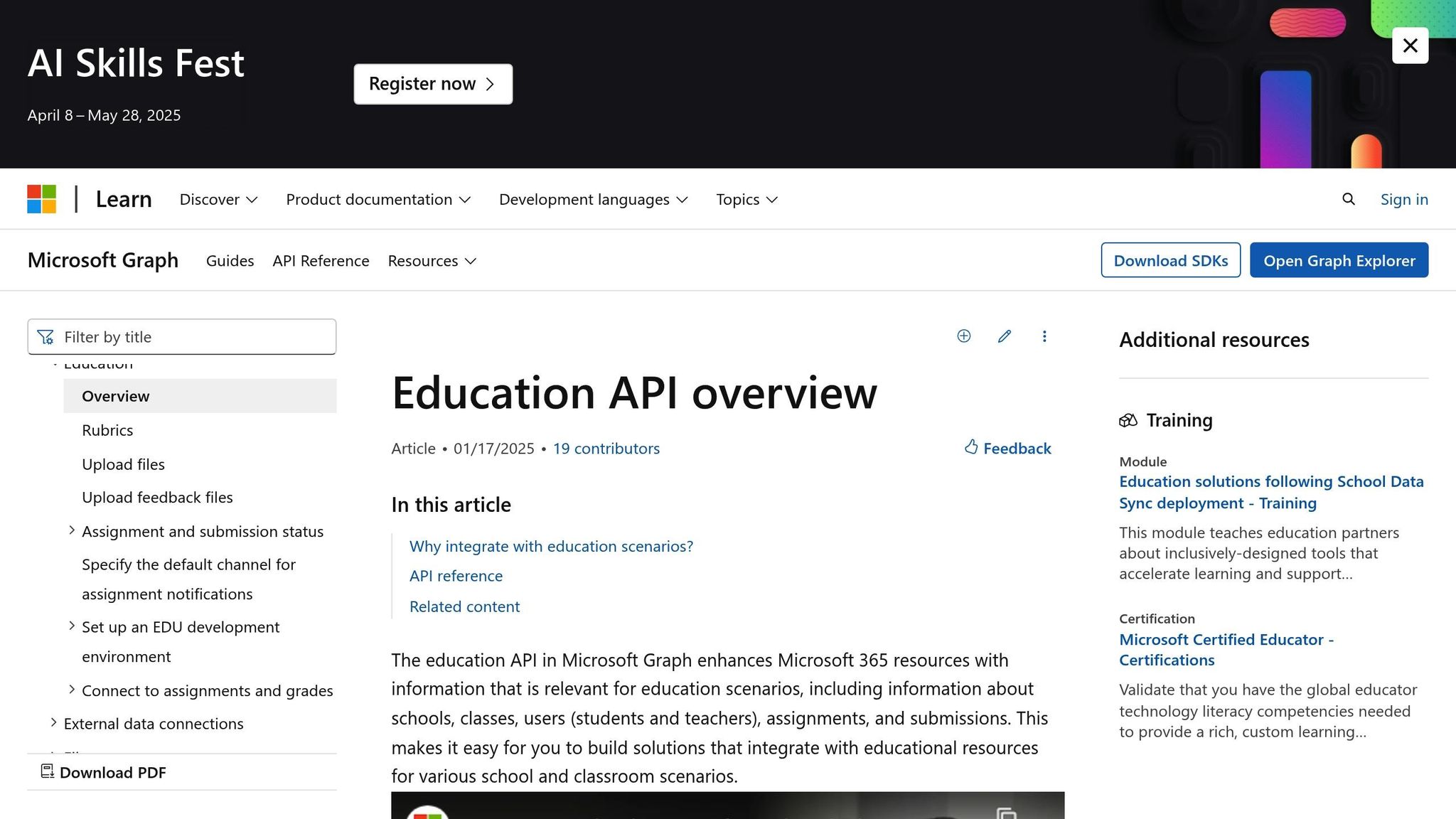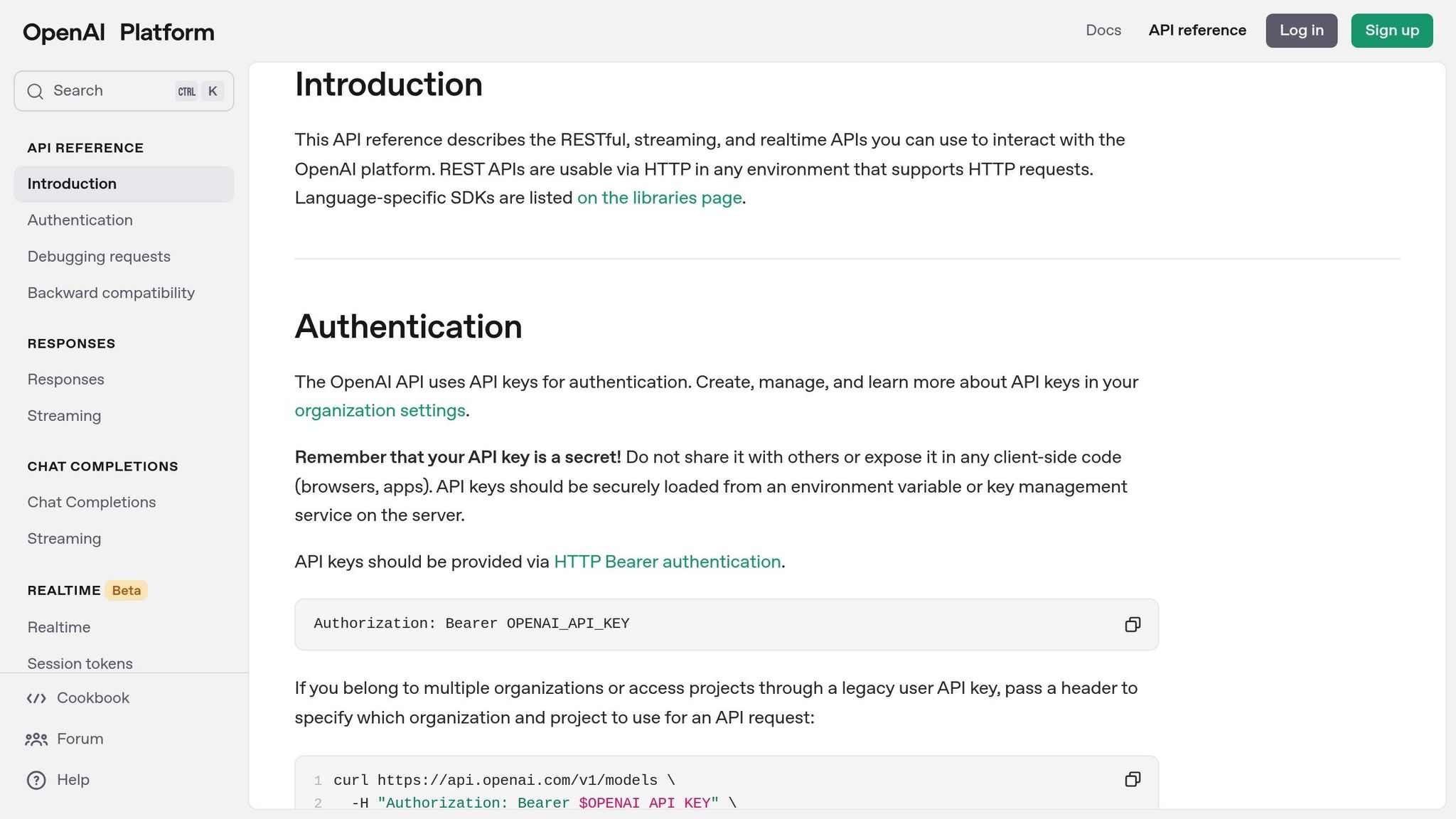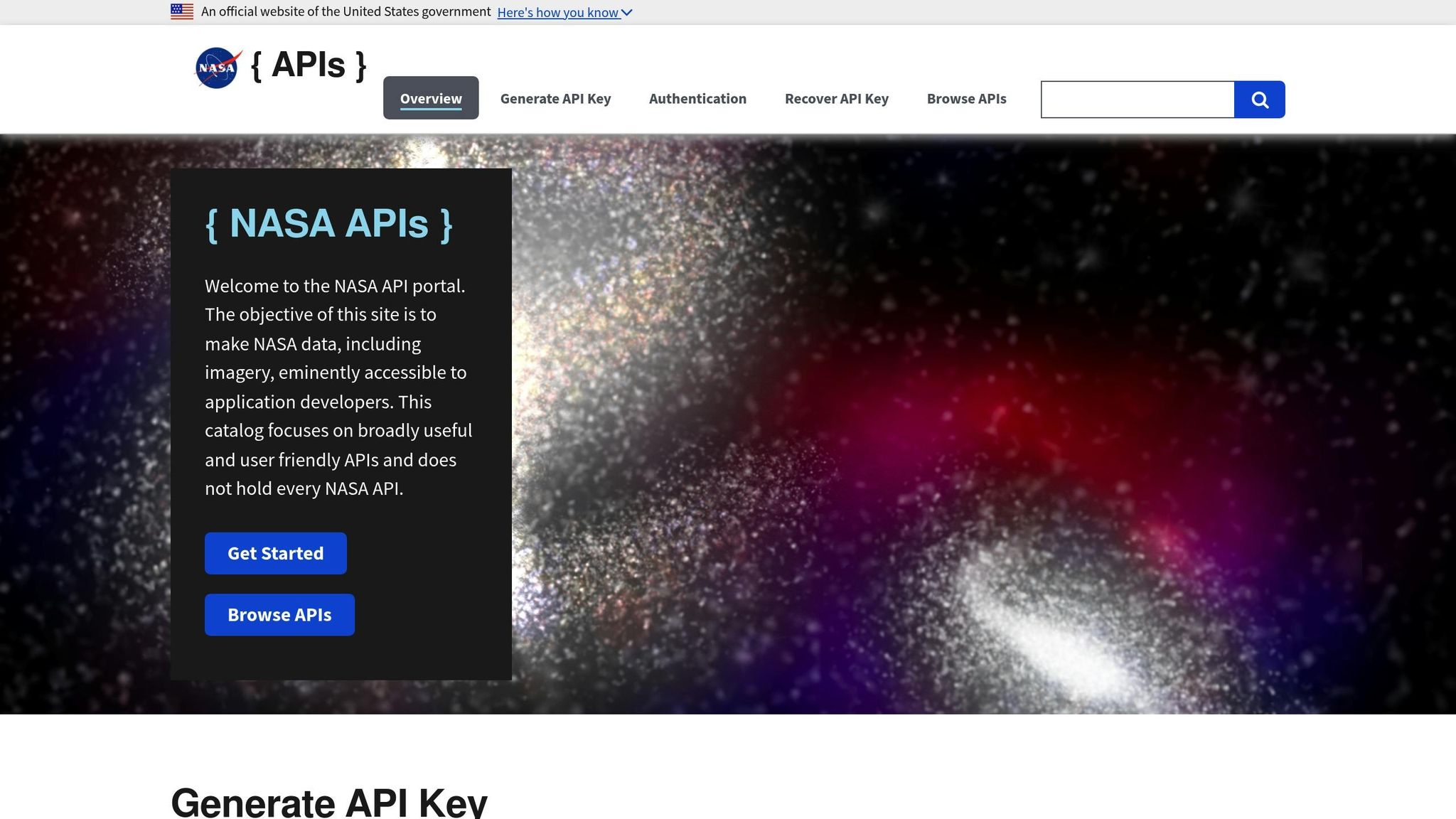
Best Free APIs for Education App Integration
Want to supercharge your education app without spending a dime? Free APIs can help you add powerful features like quizzes, flashcards, and virtual classrooms without building from scratch. Here's what you need to know:
- Top Free APIs: Microsoft Graph, Google Classroom, Quizlet, OpenAI, NASA, and QuizCat AI.
- Key Benefits: Save on development costs, speed up feature integration, and scale easily for more users.
- Features to Look For: Comprehensive documentation, SDKs for popular languages, and support for file formats like PDF and DOCX.
| API | Free Tier Limit | Best For |
|---|---|---|
| Microsoft Graph | 10,000 requests/hour | School Management |
| Google Classroom | 100 requests/minute | Virtual Classrooms |
| Quizlet | 100,000 calls/month | Study Materials |
| OpenAI | $5 credit | AI-powered Learning |
| NASA | 1,000 requests/hour | Science Education |
| QuizCat AI | $0.99 trial for 1 week | Study Content Creation |
Pro Tip: Use caching to improve performance, monitor API usage to avoid disruptions, and secure your API keys. Ready to enhance your app? Dive into the full guide for tips and examples.
Build Innovative Edu Apps using Google APIs
How to Select Education APIs
Choosing the right education API involves assessing critical factors like integration needs, usage limits, and platform compatibility.
Integration Requirements
When evaluating an API, make sure it offers the following:
- Comprehensive Documentation: Look for setup guides, endpoint details, and code examples to streamline development.
- SDKs for Popular Languages: Check for prebuilt libraries in languages like Python, JavaScript, or Java.
- Sample Applications: Test working examples to understand common use cases and functionality.
- Developer Support: Access active forums or technical support to resolve issues quickly.
- File Format Compatibility: Ensure the API supports formats like PDF, DOCX, and TXT for seamless content handling.
Usage Limits
Most free API plans come with restrictions that could impact app performance. Key limitations to consider include:
| Limit Type | Metric | Impact |
|---|---|---|
| Rate Limits | Requests per second/minute | Can slow down app responsiveness |
| Daily Quotas | Total daily API calls | Affects scalability |
| Data Transfer | Bandwidth limitations | Impacts content delivery |
| Concurrent Users | Simultaneous connections | Restricts classroom usage |
Platform Support
Ensure the API aligns with your development environment by checking:
- Programming Language Support: Confirm compatibility with your preferred coding language.
- Framework Integration: Verify it works smoothly with your chosen development framework.
- Client Libraries: Look for official SDKs to simplify implementation.
- Mobile Compatibility: If needed, confirm the API provides native libraries for iOS and Android.
6 Free Education APIs
Here’s a look at six free APIs that can elevate educational tools and applications. These APIs cover everything from online learning platforms to STEM-focused tools.
Microsoft Graph Education API

- Sync data for students and teachers across systems
- Automate the creation, distribution, and grading of assignments
- Simplify grade calculations and reporting
- Integrate seamlessly with OneDrive for educational resources
Google Classroom API
- Set up and manage virtual classrooms
- Track assignment progress and grades
- Share learning materials effortlessly
- Send updates directly to students and educators
Quizlet API

- Access and integrate pre-made study sets
- Create custom study materials
- Monitor student progress on learning activities
- Discover relevant resources for specific topics
OpenAI API Free Tier

- Automatically generate educational content
- Review and evaluate written assignments
- Develop dynamic quiz questions
- Provide AI-driven tutoring support
NASA API

- Explore a vast library of space-related photos
- Access STEM educational resources
- Retrieve data from current space missions
- Dive into archives of space exploration history
QuizCat AI

QuizCat AI transforms notes into quizzes, flashcards, and even podcasts. Trusted by over 400,000 students, it offers tools for every learning style:
- Convert notes into interactive quizzes, flashcards, and podcasts
- Study on any device, anytime, with support for formats like PDF, DOCX, and TXT
- Perfect for personalized learning experiences
"Literally a lifesaver during finals. Uploaded my notes, hit 'create,' and BOOM - quizzes and flashcards ready to go. It's like having a personal tutor 24/7." – Jake Harrison
With a user rating of 4.8/5 from over 530,000 users, QuizCat AI offers a trial for just $0.99 during the first week, making it accessible for both students and educators.
| API | Free Tier Limit | Best For |
|---|---|---|
| Microsoft Graph | 10,000 requests/hour | School Management |
| Google Classroom | 100 requests/minute | Virtual Classrooms |
| Quizlet | 100,000 calls/month | Study Materials |
| OpenAI | $5 credit | AI-powered Learning |
| NASA | 1,000 requests/hour | Science Education |
| QuizCat AI | $0.99 trial for 1 week | Study Content Creation |
sbb-itb-1e479da
Using APIs in Education Apps
Study Apps
Study apps turn traditional study materials into dynamic, interactive learning tools. By using AI-driven APIs like QuizCat AI, these apps can create quizzes, flashcards, and even audio content from uploaded notes. For instance, QuizCat AI takes your study notes and transforms them into engaging, interactive resources.
Here’s what this technology enables:
- Automated quizzes crafted directly from study materials
- Flashcards that adapt to a student's learning speed and progress
- Audio content for convenient, on-the-go learning
These features fit easily into larger educational platforms, enhancing the learning experience.
API Integration Tips
When integrating APIs, technical tweaks can improve performance and reliability.
Data Caching
Speed up access to frequently used data by storing it locally. Here are a few options:
- Browser Storage: Use localStorage to cache items like quiz questions or other educational content.
- Server-side Cache: Tools like Redis or Memcached can store API responses for quick access.
- Cache Invalidation: Set appropriate TTL (time-to-live) values to ensure data stays up-to-date.
Usage Tracking
Keeping an eye on API usage helps maintain smooth functionality. Consider these approaches:
- Request Logging: Track every API call, including timestamps and endpoint details.
- Usage Dashboard: Build a real-time system to visualize API consumption patterns.
- Alert System: Set up notifications to warn when usage is approaching set limits.
Detailed tracking helps you understand usage trends and avoid potential disruptions.
API Security
Protect your API and user data with these measures:
- Environment Variables: Store API keys securely instead of embedding them in your code.
- Rate Limiting: Use throttling to prevent overuse or abuse of your API.
- Access Control: Restrict access to endpoints based on user roles or permissions.
- Data Encryption: Ensure all communication happens over HTTPS.
These steps not only secure your API but also prepare you for unexpected challenges.
Backup Plans
Have a plan for when things go wrong. Here’s how:
-
Offline Mode
Keep a local cache of essential content so users can continue even without internet access. -
Failover Systems
Set up backup endpoints or alternative data sources to keep things running during outages. -
Error Handling
Design your app to degrade gracefully. Provide clear, user-friendly error messages when certain features aren’t available. -
Service Status
Use automated checks to monitor API health and maintain a status page to inform users about any disruptions.
Regular testing and monitoring will help ensure your application runs smoothly, even under less-than-ideal conditions.
Summary
Free APIs can transform educational applications by streamlining processes, offering personalized experiences, and expanding access to resources. To make the most of these tools, keep the following in mind:
- Security Measures: Protect user data with proper API key management and encryption techniques.
- Performance Tuning: Use caching to ensure quick response times and smooth functionality.
- System Reliability: Set up backups and include offline features to keep things running smoothly, even during disruptions.
- Usage Tracking: Monitor how APIs are being used to avoid interruptions and improve overall efficiency.
"Uploading my notes and instantly having quizzes ready feels like magic. This tool has completely changed the way I study. I actually feel prepared for once!" - Maya Johnson
To ensure success, test your setup thoroughly, keep an eye on API performance, update your documentation regularly, and follow data privacy rules.
